You may not find this terribly rewarding unless you're included here, so this is a good time for casual and random browsers to turn back before they get too caught up in the sweep and majesty of the proceedings and can't let go.
21 May 2018

A dead end. A damp squib. A non-starter. The comune of Magliano Alfieri is a tiny village 8km northeast of Alba, still in the province of Cuneo, and the Castello di Magliano Alfieri, occupied by the Alfieri family since the mid-13th century as a fief of Monferrato, the Roero (note the three cartwheel emblem of the Roero) and the Savoyards, is presently the home of a couple of cultural and artistic museums. But there's not a soul about; nobody; the village looks deserted, as in a post-apocalyptic movie. We'll have to take our curiosity elsewhere.
Fossano

We're in the upper town, the old town, of Fossano, a small city of about 25,000, the fourth largest town in the province of Cuneo only about 20km north of Cuneo itself. By its location alone, on the plain of Cuneo midway between the Alps and the Langhe hills, it's a congenial and convenient base for tourist adventures in the region, as explained in this 2014 feature in the Washington Post.

The lower town of Fossano to the north and west has a good deal of modern industry and suburbia, but the upper town, overlooking the river Stura di Demonte, a tributary of the Tanaro, has a mix of late medieval through to 18th century structures along narrow, often arcaded streets. As here, on the Via Roma high street that bifurcates the town along a north-south line.

A line of arcades like a hall of mirrors

It appears that the comune of Fossano was created sometime before 1236 by a league of Guelph cities under threat from the Ghibelline partisans of the Empire. Very soon afterward (1251), we're told, it was dominated by the Ghibelline city of Asti, and shortly after that (1304) it came into the possession of the Marquisate of Saluzzo -- and then almost immediately (1314) the Fossanesi reached out for protection to the Prince of Achaea.

Philip of Savoy (1282-1334) was the lord of Piedmont in the cadet branch of the Savoyard dynasty, and in 1301 he inherited the title of Prince of Achaea in the right of his wife, Isabella of Villehardouin (c.1260-1312), daughter of William III of the Principality of Achaea (or the Morea, i.e., the Greek Peloponnese), one of the three vassal states of the original Crusader 'Latin Empire of Byzantium' (1204-1261). Philip lost his title in 1306, when Charles II of Naples, the Angevin King of Sicily, who'd inherited suzerainty over it, confiscated it and bestowed it on his own son -- Philip relinquished his claim in 1307 (receiving the County of Alba as compensation), but he and his heirs continued to insist on their right to it, until the cadet branch was melded into the main branch of the Savoy in 1418; thus their 14th century properties in the Piemonte are referred to as those of the Savoy-Achaea.

Miles of arcades
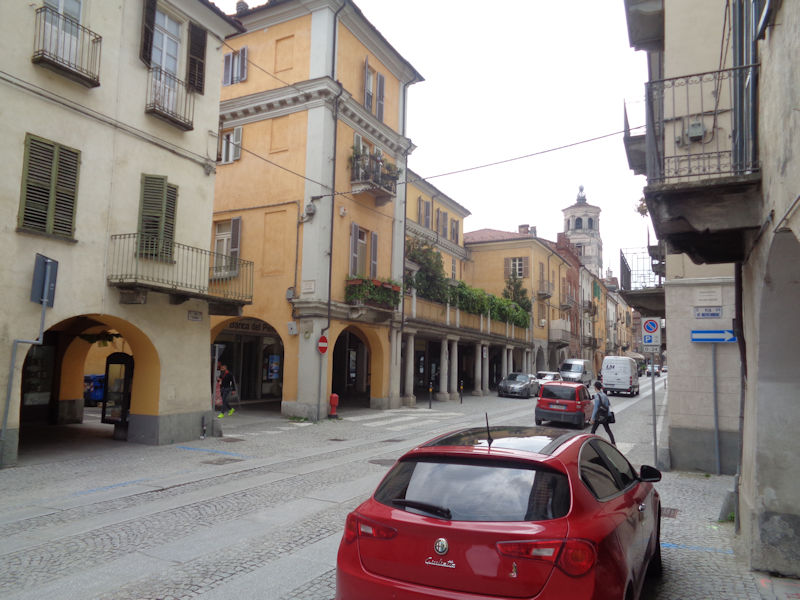
Street scenes on the Via Roma
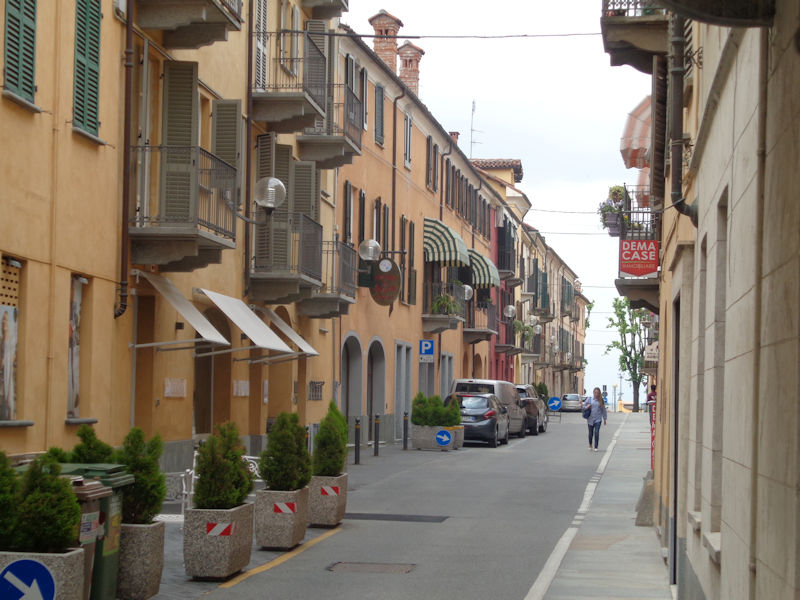
The Via Giuseppina Falletti side street
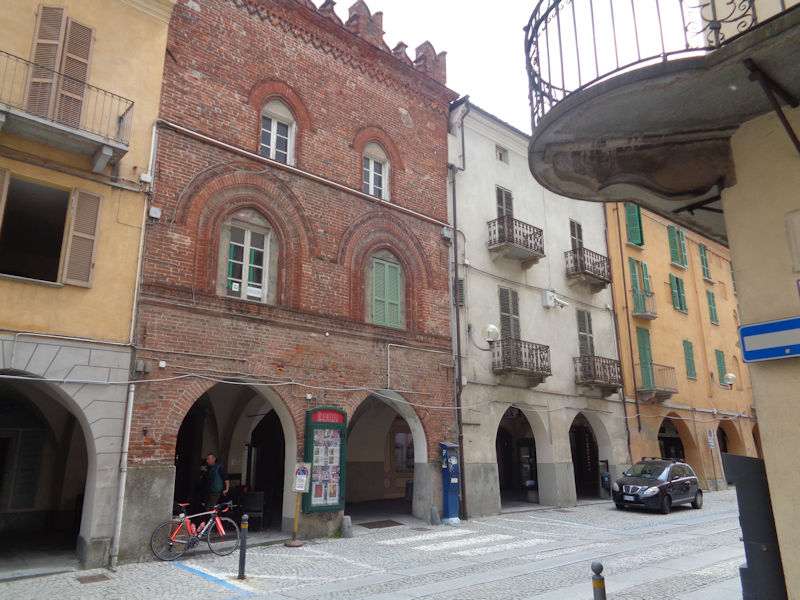
The cinema theatre I Portici (the arcades), Via Roma

The Duomo di Fossano, or Cattedrale di Santa Maria e San Giovenale, i.e., Saint Juvenal of Narni, patron saint of Fossano, who may have saved Narni from invaders by producing a divine thunderstorm and died not-martyred in about 375 -- the Duomo of Fossano claims to have his remains here, but they may belong to some other Saint Juvenal. This building was completed in 1791 to replace a 13th century predecessor, but the belltower dates from about 1400.
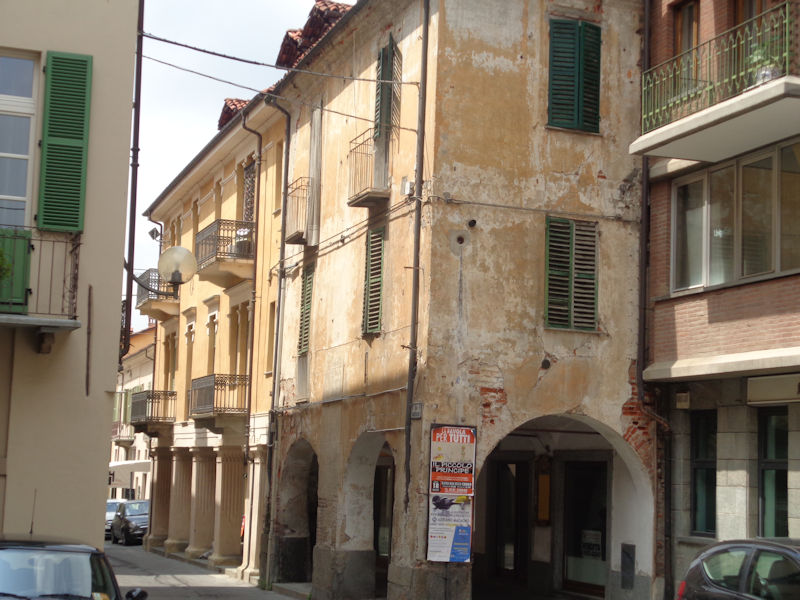
We'll walk around the block a couple of times and come back to the Duomo a little later. This is the Via Cavour, leading to . . .

. . . the Piazza Castello.

The imposing Castello dei Principi d'Acaja was, as the name suggests, built from 1324 to 1332 by our so-called 'Prince of Achaea', Philip of Savoy, in response to Fossano's appeal to him in 1314 for assistance in their disputes with the Marquis of Saluzzo. It's a sizable square building around a central courtyard, with four square towers standing out from the corners.
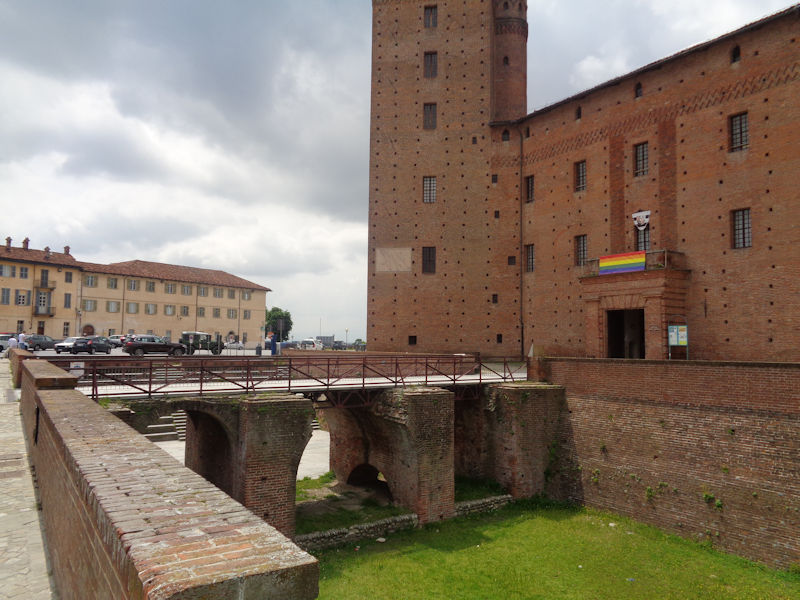
The original moat around three sides of the castle survives as this circumambient ditch with the drawbridge replaced by a real one.

The Piazza Castello from the front door

Also called the 'Castello degli Acaja', it now houses the respected city library and historical archives, as well as the tourist office. And it's presently all locked up tight.
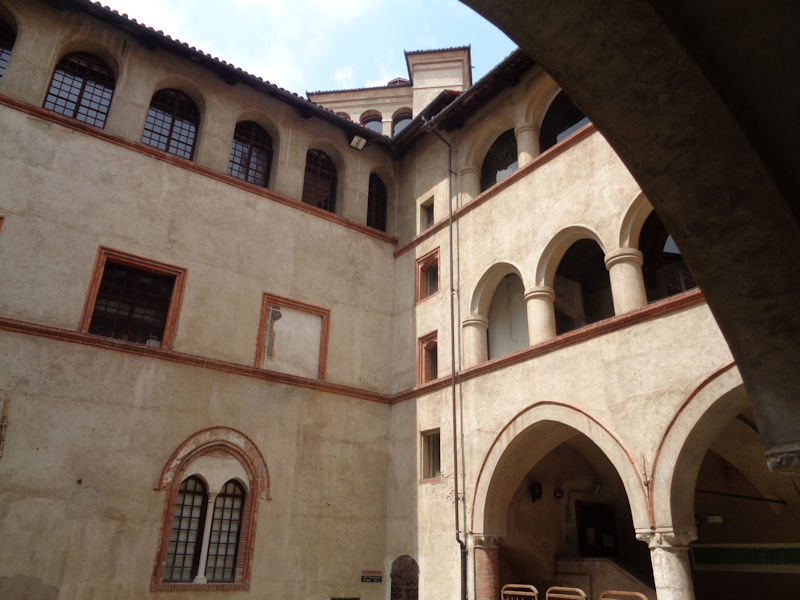
With the extinction of the Savoy-Achaea cadet branch in 1418, that family's properties came to the newly-created Duke of Savoy, Amadeus VIII 'the Peaceful' (the anti-pope Felix V), and his heirs, later in the 15th century, set about converting this stronghold into a commodious residence. These beautiful porticoes date from about 1485.
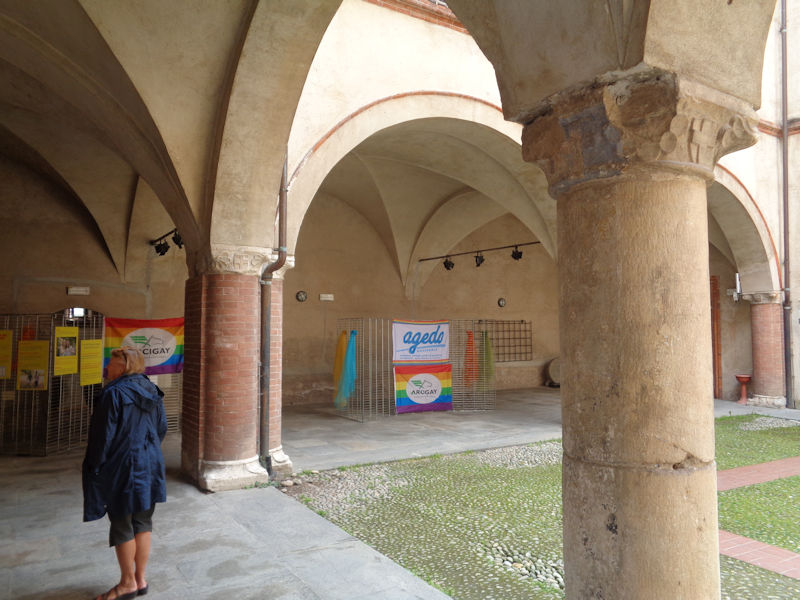
A study in profound disappointment. No guided tours; not even the Tourist Office.
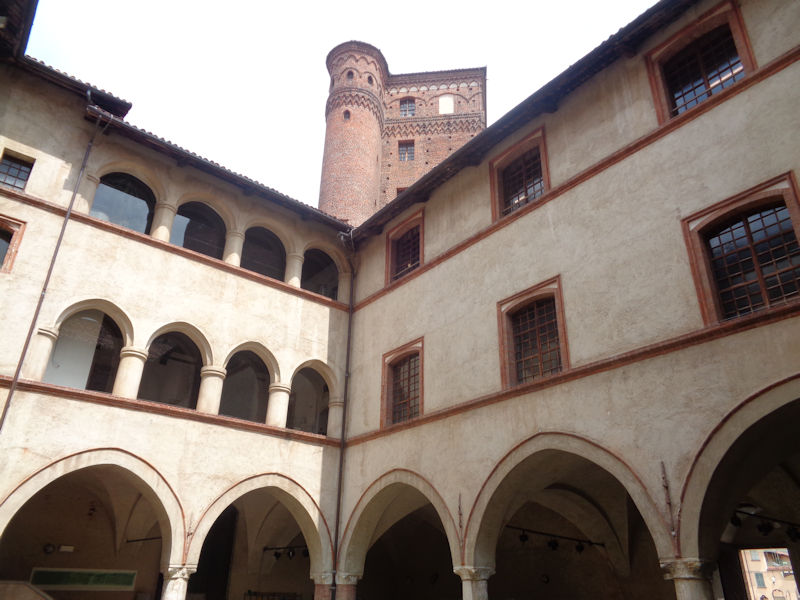
In later years, the castle saw service in the 17th century as a prison (most infamously for the imprisonment in 1689 of the survivors of the second Savoyard massacre of the 'heretical' Waldensian communities in the Alpine valleys), then in the 18th century as barracks and stables. Renovations by the comune began in 1961, to obvious success.

The belltower of the Duomo


We can't have too many photos of this fine castle. This, taken while we're wondering where Kristin's gone. In the Italian War of 1536-1538, the Fossanesi wisely agreed to surrender to the French army on its way north to Torino in 1536, and thus avoid a proper sacking in passing, but the town's young men dashed to join the garrison in the castle and hold out, so the French decided to besiege the castle after all. In good time, the defenses held and the Imperial army arrived to besiege the French in turn and send them packing.

We can't have too many photos of this fine castle. (Kristin's finally showed up.) Similarly, in the Italian War of 1551-1559, the French Maréchal Brissac, in his pillaging of the Piedmont and capture of Vercelli, Ivrea, Casale, etc., was unable to capture Fossano during his assaults on the Langhe region in 1553-1554.

We're off down the Via Mazzini towards the town centre.
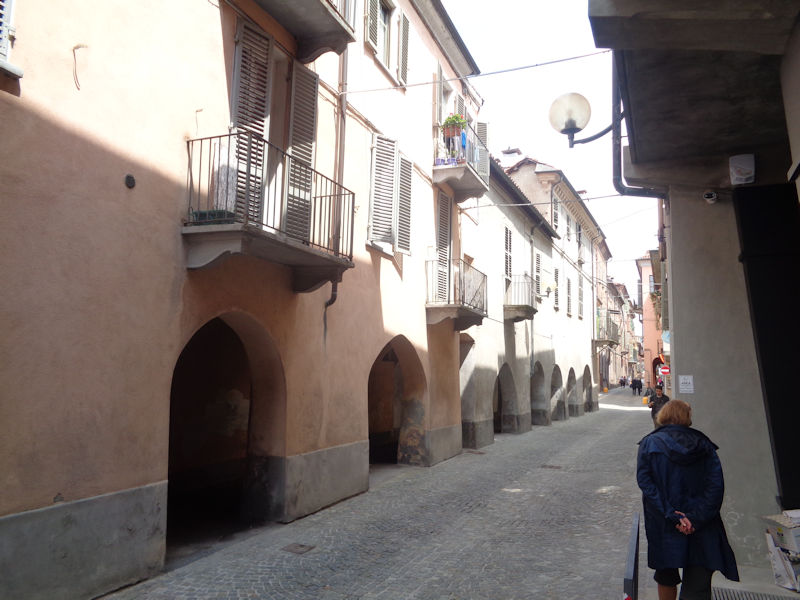
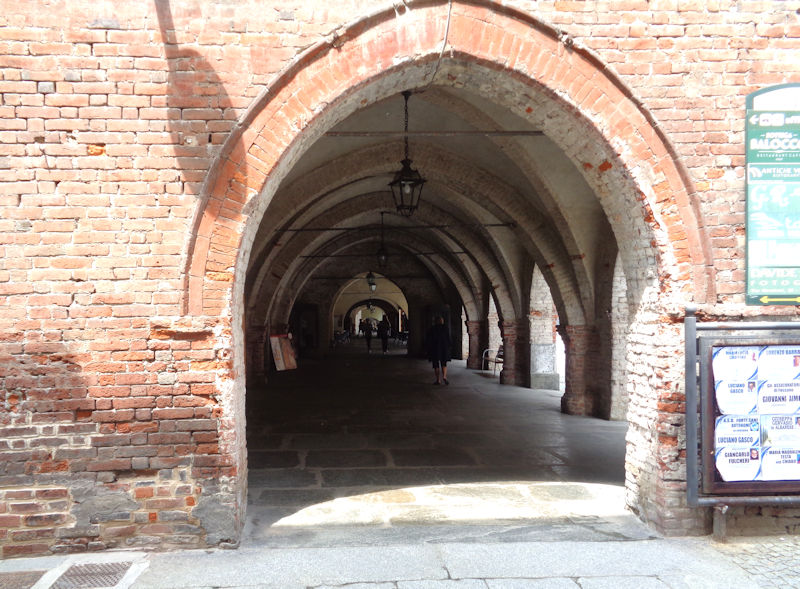
More porticoes on the Via Roma

The Duomo and the Palazzo Alessi di Canosio, or Palazzo del Comandante, an ancient building remodeled in the 18th century, now belonging to the Cassa di Risparmio di Fossano (CRF) bank.

We're off for a restorative pastry in the elegant Caffè Grande.

Giulio Regeni was an Italian PhD student at Cambridge University who was researching his thesis on Egyptian politics when in 2016 he was tortured and murdered by Egyptian government goons. Neither the Egyptian government nor (some say) Cambridge University have been forthcoming with information about the matter.

The astonishing Palazzo Daviso at the far end of the Via Roma, dating from 1700 in its present form but in fact considerably older; it belonged to the Counts Bava of San Paolo, but after the death of the historian and intellectual Count Emanuele Bava (1737-1829), it was purchased by the Counts Daviso.

The terracotta Baroque Church of the Holy Trinity with its concave façade, also called the Chiesa dei Battuti Rossi. The Confraternity of the Crucified Christ existed in Fossano from the beginning of the 14th century, dedicated to charitable works for the poor and pilgrims, but by the mid-16th century the main confraternity dedicated itself to the Holy Trinity and took over administration of the hospital for the poor and sick. They adopted a red cassock, hence the 'Battuti Rossi', and by the 18th century they had outgrown their facilities and commissioned this church, built between 1730 and 1739, alongside the adjacent hospital.

The Holy Trinity Church and the Piazza Battuti Rossi, seen from the . . .

. . . Piazza Vittorio Veneto and the elevator to the lower town.
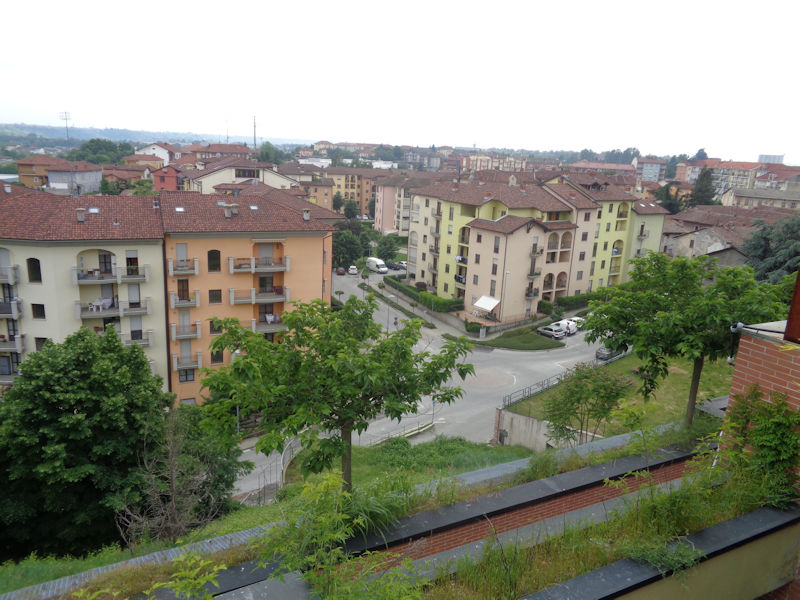
The lower town looking southward
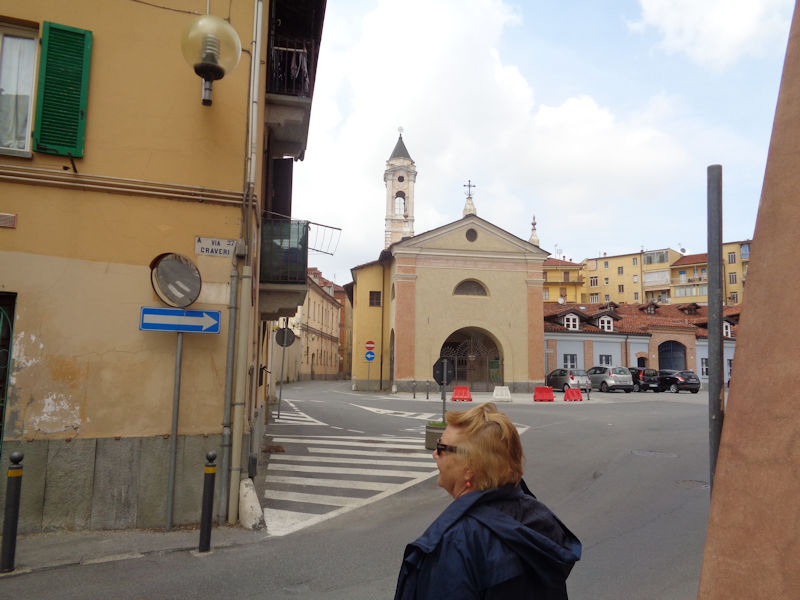
Circling back toward the town centre: that's the Chiesa del Gonfalone, or dei Battuti Bianchi. This was the base for the Confraternity of the Battuti Bianchi (from their white robes), whose mission was fundraising for the ransoms of Christians kidnapped by the Turks and Moors. The building apparently dates from the 16th century, but the façade, porch, and belltower are from the 18th.
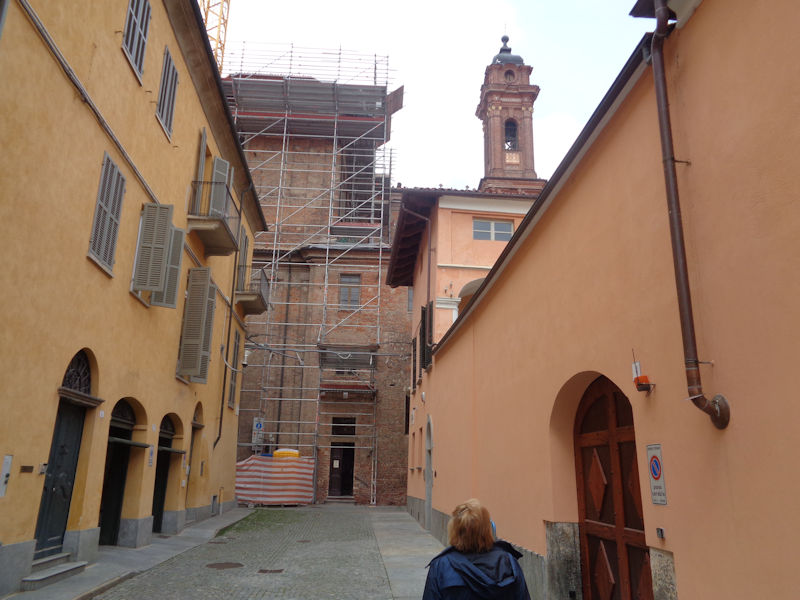
We're sneaking into the Duomo by the back door, by Via Vescovado or Bishop's Street.

The present church building was consecrated in 1791, which is outside of our usual parameters.

But we note a strange fascination with what's evidently an homage to the Shroud of Turin.

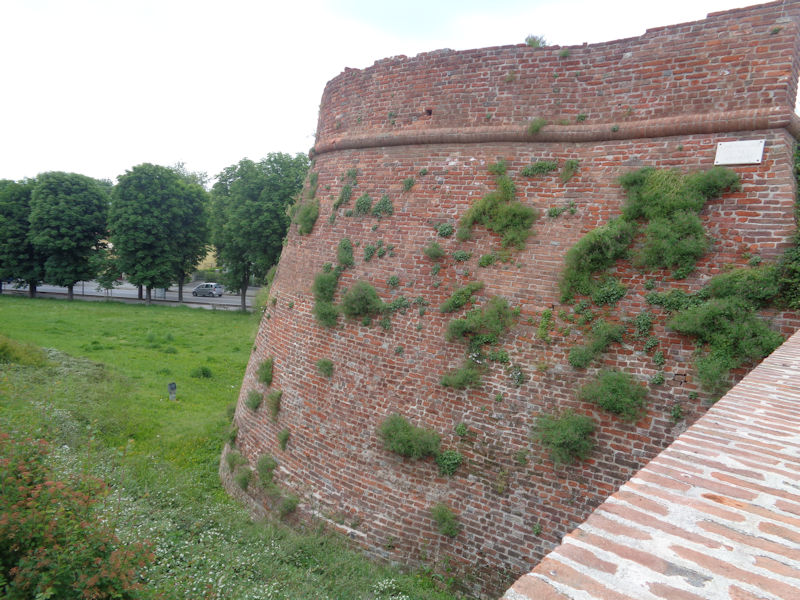
Back at the north end of the Via Roma, this is a bastion from the old city walls. The walls all round the city were commissioned by the Emperor Charles V in 1550 and mostly destroyed by the municipality in 1850 to permit further growth of the city.

The bastion is host to the
Monumento ai Caduti di Fossano, a memorial to the city's war dead, including from the first war of independence, 1848-1849, the second in 1859, and the third in 1866, as well as the wars in Libya and in Eritrea in the 20th century, along with the first and second world wars (including the partisans as well as the soldiers).

The parish church of Santa Maria del Salice (or of the Willow), and the Piazza del Salice on the site of the Willow Gate, one of the city's four gates back in the day. The buildings behind the belltower are the city's prison.
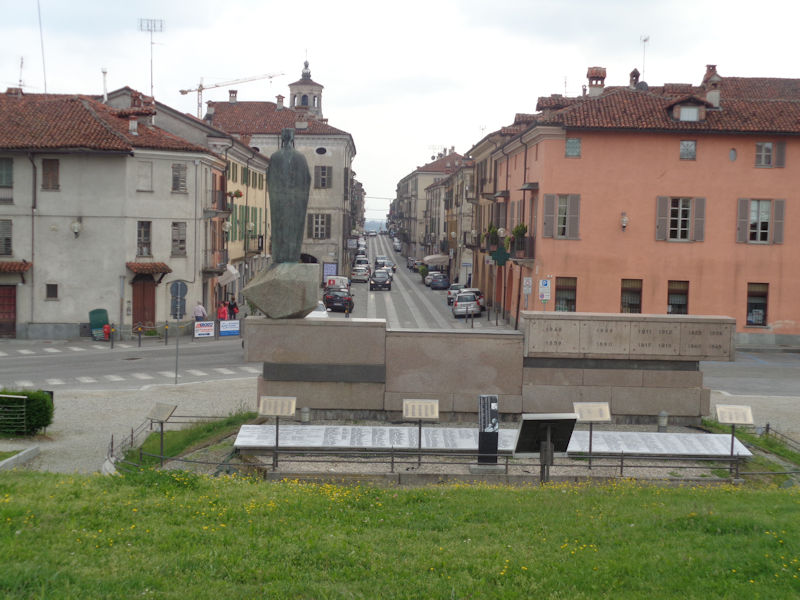
A view down the Via Roma from the war memorial on the old bastion
Next: Lu and Vignale Monferrato

 Dwight Peck's personal website
Dwight Peck's personal website










































